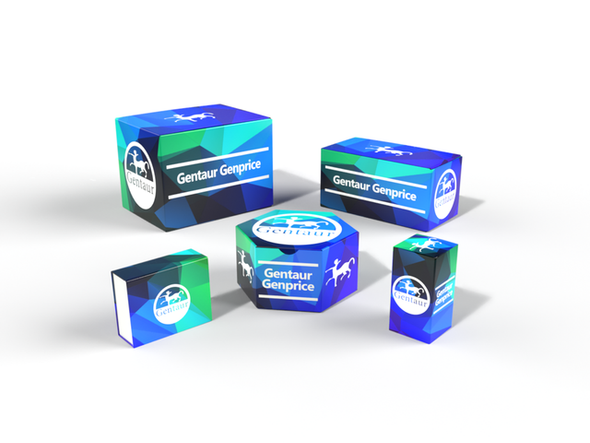Description
FOXI1 Antibody | 25-466 | Gentaur UK, US & Europe Distribution
Host: Rabbit
Reactivity: Human
Homology: N/A
Immunogen: Antibody produced in rabbits immunized with a synthetic peptide corresponding a region of human FOXI1.
Research Area: Transcription
Tested Application: E, WB
Application: FOXI1 antibody can be used for detection of FOXI1 by ELISA at 1:62500. FOXI1 antibody can be used for detection of FOXI1 by western blot at 1 μg/mL, and HRP conjugated secondary antibody should be diluted 1:50, 000 - 100, 000.
Specificiy: N/A
Positive Control 1: Cat. No. XBL-10407 - Fetal Heart Tissue Lysate
Positive Control 2: N/A
Positive Control 3: N/A
Positive Control 4: N/A
Positive Control 5: N/A
Positive Control 6: N/A
Molecular Weight: 41 kDa
Validation: N/A
Isoform: N/A
Purification: Antibody is purified by peptide affinity chromatography method.
Clonality: Polyclonal
Clone: N/A
Isotype: N/A
Conjugate: Unconjugated
Physical State: Liquid
Buffer: Purified antibody supplied in 1x PBS buffer with 0.09% (w/v) sodium azide and 2% sucrose.
Concentration: batch dependent
Storage Condition: For short periods of storage (days) store at 4˚C. For longer periods of storage, store FOXI1 antibody at -20˚C. As with any antibody avoid repeat freeze-thaw cycles.
Alternate Name: FOXI1, FKHL10, FREAC6, HFH3, MGC34197, FKH10, HFH-3, FREAC-6
User Note: Optimal dilutions for each application to be determined by the researcher.
BACKGROUND: FOXI1 belongs to the forkhead family of transcription factors which is characterized by a distinct forkhead domain. FOXI1 may plays an important role in the development of the cochlea and vestibulum, as well as embryogenesis.This gene belongs to the forkhead family of transcription factors which is characterized by a distinct forkhead domain. The specific function of this gene has not yet been determined; however, it is possible that this gene plays an important role in the development of the cochlea and vestibulum, as well as embryogenesis. Mutations in this gene may be associated with the common cavity phenotype. Two transcript variants encoding different isoforms have been found for this gene.










